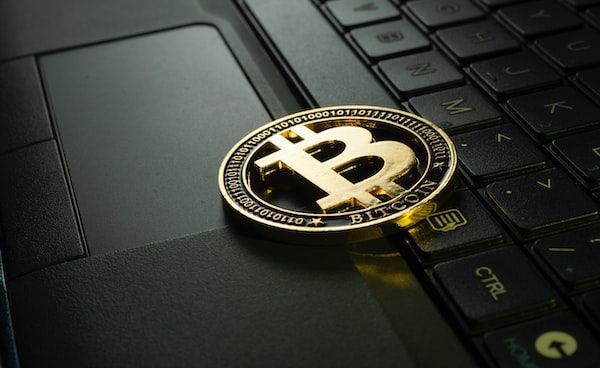The emergence of Internet and faster broadband saw the rise in international trades unlike before. Now more than ever, money and other services are changing hands daily and in large volumes. While the traditional commercial banking system has catered to the needs of international trade for a very long time, the situation is changing with the emergence of fintech, cryptocurrency and other faster modes of money exchange across countries and continental borders. Both fintech and crypto transactions are powered and facilitated by blockchain technology. Over the past decade, blockchain technology has emerged as one of the most transformative technologies of recent times. The technology was first perfected and optimised to serve as the framework technology for the premier cryptocurrency Bitcoin. Blockchain has since found efficient adaptation in various industries capitulating on the ease and proficiency of the technology. Blockchain technology, when used to power payments and other money transactions, is shown to cut down cost, create transparency, and eliminate unnecessary hierarchy in payments due to its decentralised peer-to-peer network technology. Blockchain technology is forecasted as a tool that can power almost every field of human endeavour. Healthcare, agriculture, deep-sea exploration, insurance, transportation, and tourism stand to benefit immensely from the technology. Blockchain is critical to our future and thus necessary to be familiar with its workings and systems. This article shall explore key parts of the blockchain technology, and explain how it can be maximised for solving payments and money transfer issues for the present and the future.
Blockchain Technology
Fundamentally, blockchain technology as used in payment and money transfer services consist of a distributed ledger that records transactions. The ledger stores payment details in a secure, transparent, and immutable manner. Blockchain technology payment systems are maintained by an independent network of computers that work together to validate transactions. Consequently these network of computers also assist in adding new blocks of data to the chain whenever new transaction are initiated and completed. Each block contains a set of transaction data that are verified by the network before they are added to the chain. Once added, the data in the block become immutable and cannot be deleted from the chain.
Blockchain technology is a decentralised technology with no central authority or governing body or a controlling network. Instead, participants in the network have personalised copies of the ledger and can verify transactions independently. Decentralised operations make blockchain technology payment systems highly secure, transparent, resistant to fraud, and immutable.
The base technical work of blockchain technology has roots in the works of Ralph Merkle and David Chaum in the late 1970s. Both scholars developed technologies that will serve as pointers for further development of blockchain in their respective doctoral dissertations. Merkle developled the "Merkle Tree"; a technology efficient for verifying and fetching data from a large content pool. Chaum theorised a vault system of computer that can protect people's money transactions in a transparent manner and also worked on the first digital cash. In 1992 Stuart Haber and W. Scott Stornetta developed further designs on the work of Merkle. The improvement enabled the system to store multiply document certificates on a block.
Blockchain technology as we have it today came to limelight when Satoshi Nakamoto the anonymous person, or group behind the founding of the premier cryptocurrency, Bitcoin used the phrase in a white paper and also used the technology to develop the Binance peer-2-peer (P2P) cryptocurrency transaction platform in 2008.

How it Works
The use of blockchain technology for payments is not new. Cryptocurrencies like Bitcoin and Ethereum have been using blockchain technology since inception to facilitate peer-to-peer transactions, and other crypto based trading without the need for intermediaries in the form of commercial banks, fintechs and other third party financial institutions. Transactions powered by blockchain technology are mainly peer-2-peer with no need for a third party approval. Just like the ancient mode of trade by barter business model, blockchain technology powered payment systems connect two people directly. Their transaction is stored in open, and immutable ledgers for all to see. Block chain technology has the ability to reduce risks associated with financial transactions such as fraud and cyber attacks. Exchange done on open and immutable ledgers can be seen and tracked by just anyone with the technical abilities. Cases of banks and other financial institutions being complicit in aiding illegal money transactions and hiding the identity of fraudsters are greatly reduced with blockchain technology powered payment systems. Essentially, Blockchain removes the risk associated with third parties facilitating financial transactions and other payments.
Advantages of Blockchain Technology
Blockchain powered payments system such as the widely celebrated Binance/Bitcoin facilitates “self banking”. Transactions between individuals are facilitated without need for third party commercial banks to approve or keep a closed and in fraudulent cases, mutable ledgers. The technology also cuts down extra charges such as the unregulated Financial Inclusion Plan (FIP) of Nigerian commercial banks, cross border transaction fees charged by payment gateways such as Payoneer and Paypal, and the recurring monthly fee for keeping monetary assets with commercial banks. With blockchain technology, one only needs a stable Internet and trusted clientele to buy and sell goods and services in shorter time period.
The mainstream acceptance of blockchain technology for international money transactions and payment gateways is growing at an appreciable level. Many industries are adopting the technology to ease their tasks of transferring and receiving large sums of monetary assets. Companies such as Mastercard and PayPal who are specialist in cross-border payments are exploring blockchain technology as a way to reduce costs, improve speed, and guarantee maximum security of their payment processes. Blockchain technology powered payment systems are also gaining wide acceptance in e-commerce, gaming, and many other industries.
The Current State of Blockchain Technology
While we celebrate blockchain technology as the future for the prosperity of payment systems, it is also important to highlight some challenges of the technology at the moment. Blockchain technology payment systems are yet to gain wide mainstream acceptance especially among traditional commercial bank users. Primarily issues relating to scalability, speed, and usability precipitate the lack of acceptance.
Majority of blockchain payment systems at the moment can only handle a limited number of transactions per second. This is low compared to traditional fintech payments and monetary transfer systems such Visa and Mastercard. These two platforms are able to power thousands of cross-border monetary transactions simultaneously. Though occasionally affected by downtime, these systems have shown that they can be reliable for business requiring bulk and multiple monetary transactions by the second. The scalability limitation is caused by the current design of the blockchain network, which requires transactions to be verified by all nodes in the network, this process of verification often leads to slower processing times. Blockchain technology thus at the moment is able to power only small and infrequent payments and transactions. This affects the scalability of the technology for bigger clients with large and frequent needs for money payments and transactions.
It is also noteworthy that some blockchain payments systems are laden with the issue of speed. Certain cryptocurrencies such as Bitcoin and Etheruem can process transactions quickly, while others may take several minutes or even hours to complete. This delay is caused due to the time required for the network to verify the transaction and add it to an already existing large network of blockchain.
Easy to use interfaces for blockchain technology powered payments and monetary transaction platforms are hard to come by. Cryptocurrencies like Bitcoin and Ethereum still have relatively complex web and mobile apps that are hard to use for the common user. To efficiently work on these platforms, users require some basic understanding of blockchain technology and digital wallets. This basic skill takes time and commitment to learning. The not so easy to use features of the blockchain technology hampers acceptance among the general public.
Optimising Blockchain Technology for the Future
As blockchain technology continues to evolve and innovate, so will its potential for powering payment systems. Blockchain technology powered payments is novel, already changing the payment landscape, and could transform it in the future if the right steps are taken. To address the problem related to scalability of blockchain technology powered payment systems for mass use, networks are exploring the use of sharding. This involves splitting the blockchain into smaller sections, allowing each node to verify transactions independently. This technique can significantly increase the capacity of blockchain networks and enable them to process more transactions per second.
Blockchain networks used for payments and monetary transaction are also exploring ways to improve transaction speeds. Some blockchain networks are implementing layer 2 solutions, such as Lightning Network. This allows for faster and more efficient transactions. Concurrently, other blockchain networks are exploring the use of off-chain solutions, such as state channels, which enable users to conduct transactions off the blockchain, reducing the time required for verification. These techniques are shown to be efficient in increasing speed and position blockchain technology powered platforms for mass use.
Adopting blockchain technology
It is demonstrated in both theory and practice that blockchain technology has potentials in the money transaction industry. Though it has its peculiar challenges, newer techniques and technology are being incorporated to optimise blockchain. The adoption is also slow but it has seen steady growth especially among traditional commercial banks, and fintech. It is necessary to adopt blockchain now for posterity. It offers ease, accessibility, and affordability when optimised to full capacity.







